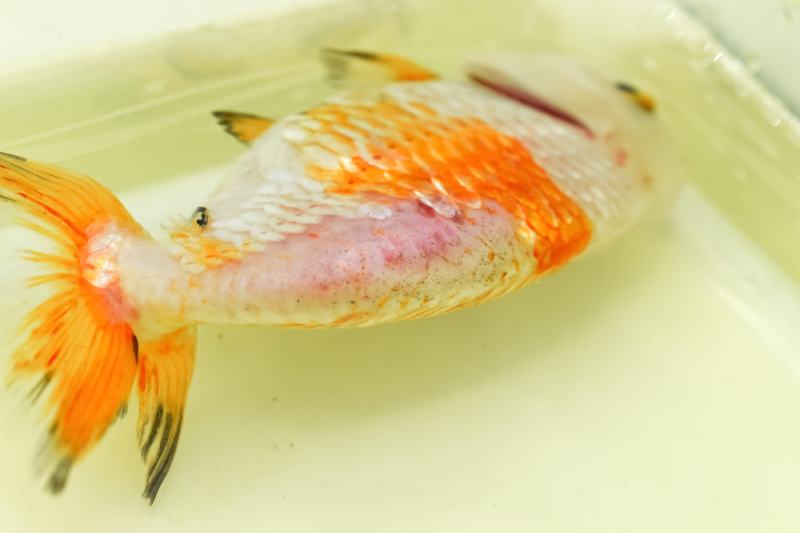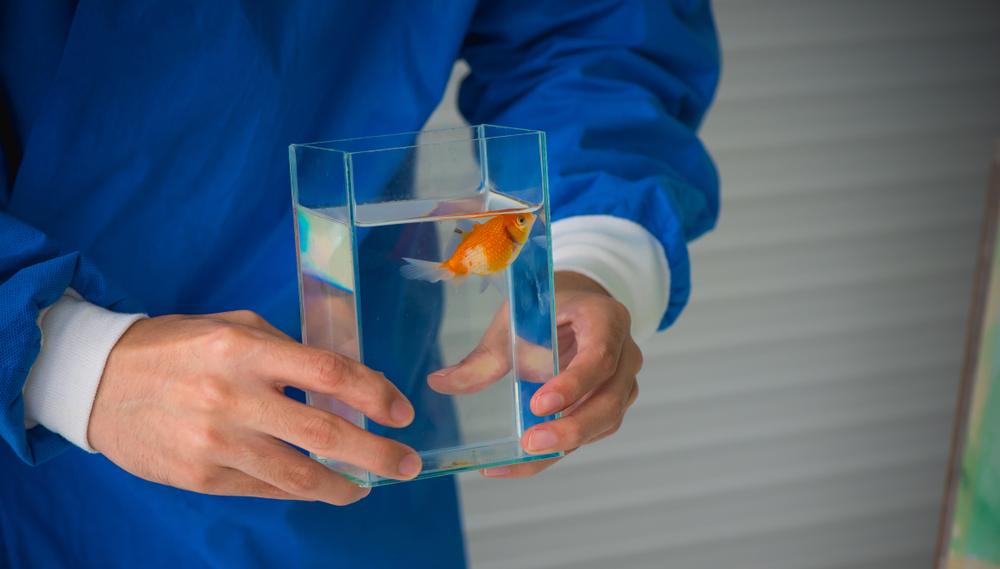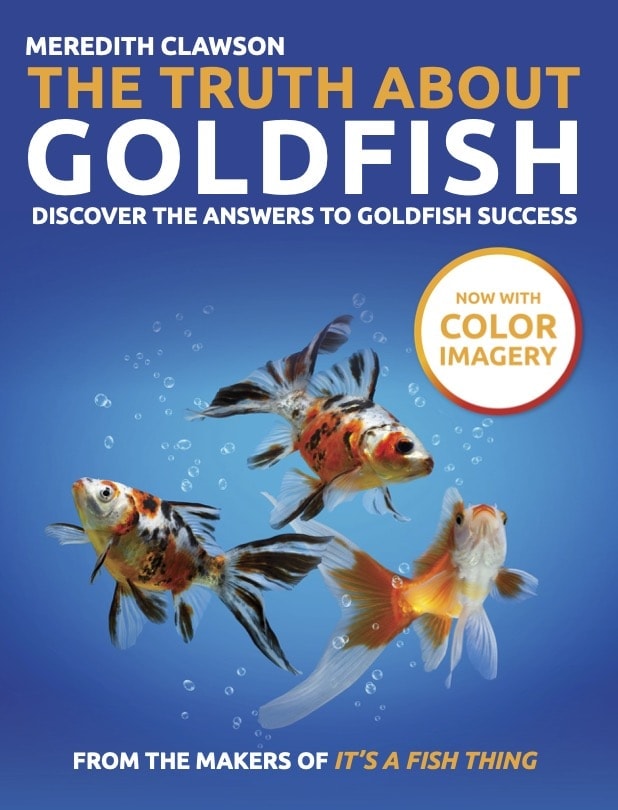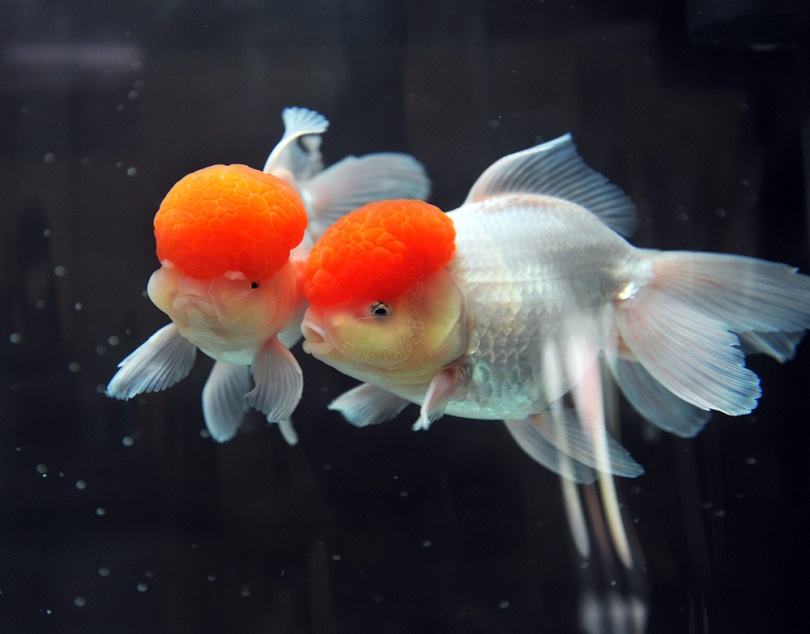How to Treat Swim Bladder Disease in Goldfish (Vet Answer)

Updated on

Click to Skip Ahead
Goldfish commonly experience swim bladder disease. This condition occurs when the swim bladder doesn’t work properly due to one of a variety of reasons. The swim bladder in goldfish is a built-in buoyancy aid. It is an organ filled with gas located along the dorsal body wall. Swim bladder disease is a general term used to describe various disorders that affect the swim bladder; often seen in goldfish but can affect any type of fish with a swim bladder.
Have you noticed your goldfish swimming on their side or floating on the bottom of their tank? Are you concerned they may have issues with their swim bladder? Are you wondering what is wrong and how to help them? Read this vet-written guide to find out what you can do to help your fish.
What Is the Swim Bladder?
The swim bladder is an organ that has developed from a portion of the digestive tract when the fish is an embryo. There are two parts of the bladder at either end of the fish’s body. The front part is fixed in position, while the back part can change size depending on how much gas it contains.
The main function of the swim bladder is to maintain normal buoyancy. In some fish, it also helps the fish perceive sounds and helps the fish communicate. Certain types of fish, including goldfish, have a special duct that connects the swim bladder to the esophagus which allows for the fish to move air in and out of the bladder to inflate or deflate it.

What is Swim Bladder Disease?
Confusingly, swim bladder disease is not a specific disorder. Swim bladder disease is a clinical sign seen as the result of a separate disease process. It is very rare that the actual swim bladder is the cause of disease. Vets like to use the term positive or negative buoyancy disorder.
Swim bladder disease is referred to as the condition where the swim bladder ceases to function normally due to physical abnormality, disease, or environmental factors. The main clinical sign of fish affected is issues with buoyancy. Swim bladder disease causes the goldfish to swim upside down, on their side, or along the bottom of their tank. This is very stressful for the fish. If you see your fish showing these signs, they need treatment as soon as possible.
Positive buoyancy disorders occur when the fish is seen to be floating on the surface of the water and a part of their body is exposed to the air. This means the skin exposed will become ulcerated and infected. Negative buoyancy disorder occurs when the fish is floating along the bottom of the tank, and they may experience skin lesions as their body brushes against the tank floor. Both positive and negative buoyancy disorders have a poor prognosis for long-term survival if left untreated.
If you're a new or experienced goldfish owner who’s unsure of the best housing setup for your goldfish family, check out our book, The Truth About Goldfish, on Amazon.
It covers everything about ideal tank setup, tank size, gravel, aquarium ornaments, and so much more!
Signs of Swim Bladder Disorder
- Floating on the surface of the water
- Swimming upside down
- Sinking to the bottom of the tank
- Swimming with the head down
- Uneven swimming
- Skin lesions on the body from exposure to air
- Swollen stomach
- Abnormal posture and position
- Swelling on one side
- “Pop eye” (protruding eye also called exophthalmos)
Diagnosis of Swim Bladder Disease in Goldfish
If you bring your fish to your veterinarian with a suspected buoyancy disorder, they will first take a thorough history. Your vet will ask about your fish’s environment and any recent changes you have noticed. The water your fish is in will need to be tested. The temperature, pH, and the amount of nitrates, nitrites, and ammonia are analyzed. Your vet will go over your fish’s nutrition.
Once your vet has obtained a full history, if necessary, they will sedate your fish to perform a full physical exam. Your vet will use a drug called MS-222 to sedate your fish.
If required, your vet can take samples for further testing. These samples include fin clips, skin scrapes, and gill biopsies. Lots of useful information can be gained from these tests.
Your vet may want to take X-rays of your fish to help identify any internal issues.

Treatment of Swim Bladder Disease in Goldfish
Treatment of swim bladder disease will vary depending on the underlying cause of the problem. Let’s discuss the various ways to combat swim bladder disease.
- Altering the environment: The environment of the tank is very important as it acts like a mini ecosystem. It is vital to ensure the water is clean. Water changes should be made a minimum of every 3 days. To balance electrolytes, sodium chloride can be added to the water. Caution must be taken when doing this as some fish are very sensitive to changes in the salt.
- If there are high levels of nitrate in your fish’s water this can have a negative impact on their swim bladder function. Check the levels in the tank and if they are high, you can perform a partial water change a few times over to reduce the amount of nitrate.
- Managing gastrointestinal issues: These are often the cause of swim bladder disease. Ensure your fish is receiving a fully balanced diet with the correct protein source. With some types of disease, fasting your goldfish and then feeding crushed peas can help alleviate any excess gas issues. Bear in mind, that peas cannot be used long-term as a source of food for your fish.
- If your fish is constipated, they may be floating on the surface of the water. Fish need to be fed a good quality fish food with the right balance of nutrients. Cheaper fish foods are more likely to contain more indigestible fillers. Eating too many of these can lead to constipation. Your fish should also have access to some fibrous vegetable material to eat throughout the day.
- Surgical intervention: Surgery can be used to correct a displaced swim bladder. There are many reasons the swim bladder may be displaced. For example, a tumor or cyst. Surgical exploration will allow your vet to find and remove any masses present. If positive buoyancy disorder has been diagnosed, due to an overinflated swim bladder, your vet will be able to treat this. They can remove the air using a needle and syringe.
- Medication: If a negative buoyancy disorder is present, your vet will need to find the underlying cause and treat it accordingly. For example, an infection will be treated with antibiotics. Other problems such as conditions that cause abdominal wasting can be treated by your vet. Intestinal parasites can be treated with anti-parasite drugs. Any other source of infection needs to be treated with antibiotics.
Frequently Asked Questions
Can overfeeding cause swim bladder disorders?
Overfeeding and feeding a bad diet lacking in fiber can sometimes cause gas to build up in the gastrointestinal tract and lead to constipation which causes the swim bladder to swell. This, in turn, puts pressure on the swim bladder preventing it from functioning properly.
Do frozen peas help swim bladder disorders?
Some vets suggest that peas can help with swim bladder issues as peas contain a high amount of dietary fiber. It is advised to consult your vet before starting to feed peas to your fish.
Why is my fish unable to swim around but still alive?
There are a few reasons why your fish might be unable to swim but is still alive. If your fish’s ability to swim is affected this is most likely to be because of an issue with their swim bladder. Various things can affect the swim bladder including constipation, infection, or enlargement of organs. It is important to remember that swim bladder disorder refers to any issue affecting the swim bladder, as opposed to a single disease.
Conclusion
Swim bladder disease (also known as positive or negative buoyancy disorder) is a multifactorial, complicated syndrome. Your vet will diagnose the underlying cause of the problem and make an appropriate treatment plan. In some cases, a change in the environment or husbandry is required. In other cases, medication will be prescribed. If you see your fish is experiencing issues with buoyancy, arrange for an appointment with your vet.
To search for a suitable vet who is qualified to treat fish in your area, you can use The American Association of Fish Veterinarians website to help you. They have a useful tool on the home page that enables you to search for a fish vet. Another helpful website is the World Aquatic Veterinary Medical Association, there is also a “Find a Vet” service here and other useful resources.
Related Reads:
Featured Image Credit: Zay Nyi Nyi, Shutterstock














